Celebrate the Caribbean Endemic Bird Festival (CEBF) with us! Our theme in 2023 is “Water: Sustaining Bird Life” highlighting the importance of water conservation to both humans and birds. Have fun learning about a new endemic bird every day. We have colouring pages, puzzles, activities, and more. Download for free and enjoy nature with your family at home.
Endemic Bird of the Day: Black-capped Petrel
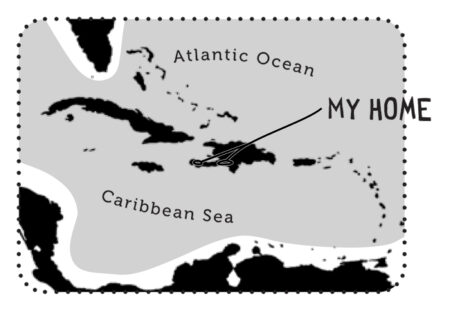 Imagine being up on one of the tallest mountains in the Caribbean. Imagine being there at night on a moonless February night. You can feel the fog all around you and can hear the sounds of a few frogs and insects. Suddenly, out of nowhere and everywhere at the same time, comes an eerie call, between a laugh and a lament. In ancient times, some thought these were the calls of the devil or witches. But today you can be assured that you are lucky enough to be near one of the few courtship areas of the Black-capped Petrel.
Imagine being up on one of the tallest mountains in the Caribbean. Imagine being there at night on a moonless February night. You can feel the fog all around you and can hear the sounds of a few frogs and insects. Suddenly, out of nowhere and everywhere at the same time, comes an eerie call, between a laugh and a lament. In ancient times, some thought these were the calls of the devil or witches. But today you can be assured that you are lucky enough to be near one of the few courtship areas of the Black-capped Petrel.
This mysterious seabird is the only seabird endemic to the Caribbean! Is is known as Diablotin (“the little devil”) in Haiti, the Dominican Republic, and Dominica, and Pajaro de la Bruja (“the witch’s bird”) in Cuba. It used to be widespread in the Caribbean but is now only known to nest in Haiti and the Dominican Republic, and possibly in Cuba, Dominica, Jamaica, and Guadeloupe.
The Black-capped Petrel has long wings (dark above, white below), a white nape and rump, and the black cap that gives it its English name. Its diet is not well known but consists mostly of fish and squid. A pelagic seabird, it spends most of its life far out at sea and comes to land only to breed, between November and June.
It is very difficult to see the Black-capped Petrel on land because it comes back to its burrow only after sunset and leaves long before sunrise, flying up and down river flyways in the dark. At sea, it is active day and night and lucky birdwatchers may see it near the coast of those Caribbean islands where it breeds. However, the best place to see a Black-capped Petrel would be just off the Guajira Peninsula in Colombia (where petrels from Hispaniola come to feed) and off Cape Hatteras, a hotspot for migrating petrels near the southeastern coast of the USA. There, you will notice its characteristic “roller-coaster” flight where it soars above the ocean and then dips to just above the water.
The Black-capped Petrel has a small population (estimated at 2,000-4,000 individuals) and is considered globally endangered. The main threats affecting the species on land are the loss of forested habitat, introduced predators (mainly mongoose, feral cats, and feral dogs), and collision with telecommunication towers. At sea, the petrel is affected by pollution (such as mercury and plastics), production of marine energy (oil and gas, and offshore wind), and attraction to lighted ships.
The Black-capped Petrel has long been part of Caribbean culture. Songs tell its story and mountains bear its name: in Dominica, two of the highest mountains (Morne Diablotin and Morne aux Diables) are named after it. The International Black-capped Petrel Conservation Group is hard at work to keep the Black-capped Petrel flying up and down Caribbean mountains. Protection of its forested breeding habitat and protection from predators is key to its long-term survival. You can learn more about this mysterious seabird at diablotin.org. Learn more about this species, including its range, photos, and calls here.
Thanks to Yvan Satge for the text!
Colour in the Black-capped Petrel
Download our West Indies Endemic Bird colouring page. Use the photos below as your guide, or you can look up pictures of the bird online or in a bird field guide if you have one. Share your coloured-in page with us by posting it online and tagging us @BirdsCaribbean #CEBFfromthenest
Listen to the calls of the Black-capped Petrel
The calls of the Black-capped Petrel at nesting areas include a drawn out “awwwww” – these ‘spooky’ noises they make from nesting burrows give them their “Little Devil” name. Away from nests, when at sea they are usually silent but sometime give a short high-pitched ‘yelp’ call.
Puzzle of the Day
Click on the image below to do the puzzle. You can make the puzzle as easy or as hard as you like – for example, 6, 8, or 12 pieces for young children, all the way up to 1,024 pieces for those that are up for a challenge!
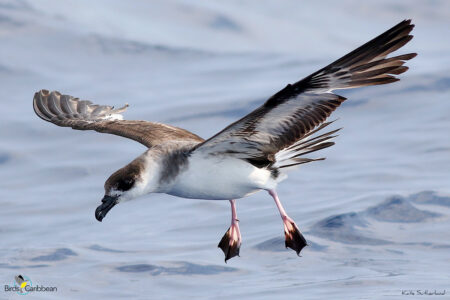
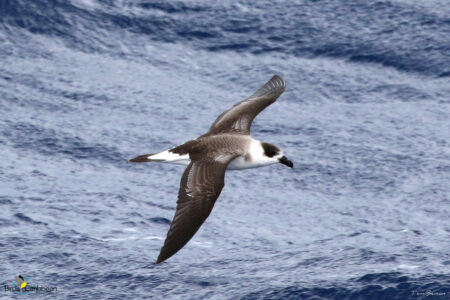
Activity of the Day
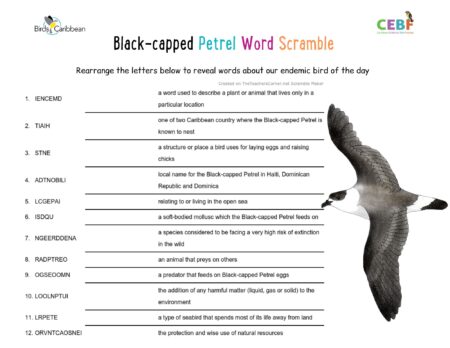 FOR KIDS: Use the information above and the clues on the sheet to untangle our our word scramble – all about the Black-capped Petrel. You’ll need to know about where is lives, what it eats, and how it behaves. You can find all the answers to the clues here.
FOR KIDS: Use the information above and the clues on the sheet to untangle our our word scramble – all about the Black-capped Petrel. You’ll need to know about where is lives, what it eats, and how it behaves. You can find all the answers to the clues here.
FOR KIDS AND ADULTS: Find out more about community-based conservation of Black-capped Petrels in the Caribbean and join Adam Brown as he takes us on a trip to Haiti, to the remote mountain village of Boukan Chat. This village and the people who live there are the focus of conservation efforts to save the elusive and endangered Black-capped Petrel. Click below to see more about village life and how sustainable agriculture has been helping both the people and the petrels.
Enjoy this video of a Black-capped Petrels, skimming the waves in the seas off Cuba, also showing their characteristic roller-coaster flight style!

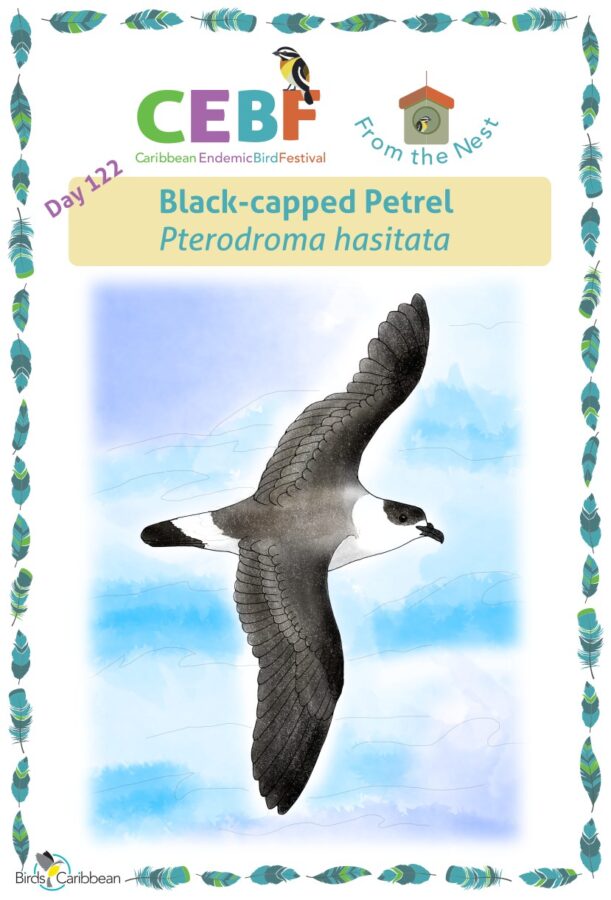
One comment
Comments are closed.